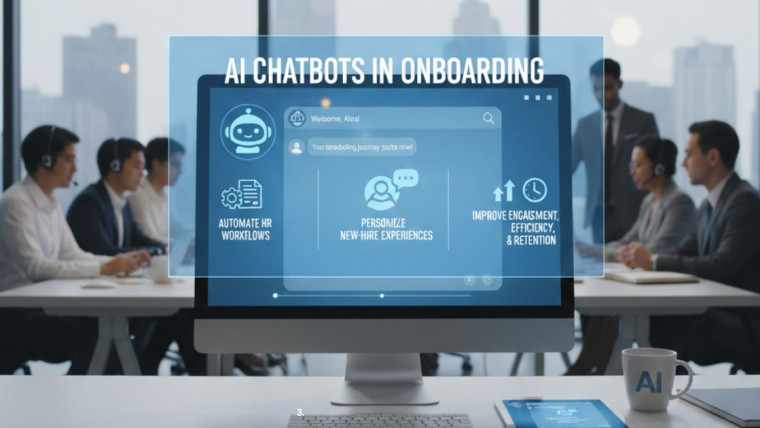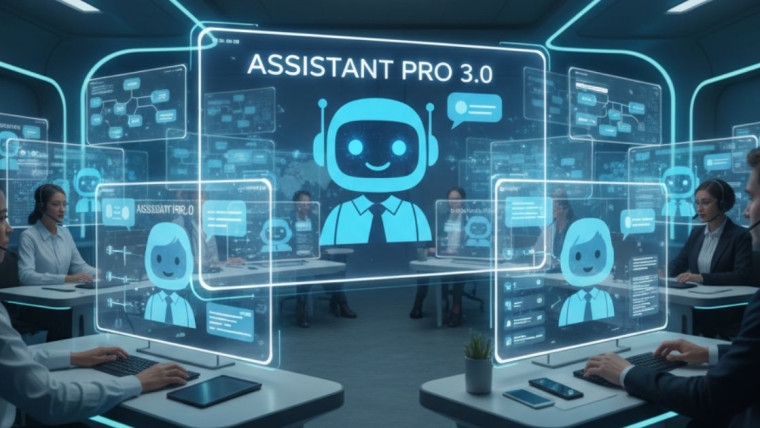Chatbots are rapidly catching on among businesses in the digital era. Whether visiting a brand’s website, scrolling through social feeds, or interacting with a virtual assistant online, chatbots are changing the way consumers interact with and experience a brand. But what is a chatbot, and how can your business use this technology to outpace the competition?
This complete guide looks at the rising importance of chatbots, the benefits and strengths they provide, the main features to consider, and even how to create your own chatbot. And to prove it works outside of the classroom, we’ll also give you examples from the real world and some pointers so that you don’t fall into the common chatbot traps that most people do – in other words, you can feel confident about rolling out a chatbot in your business.
Why Chatbots are Changing the Face of Business

Chatbots are AI-enabled instruments that are programmed to chat like humans. They engage with users in text or voice chat to help them answer questions, solve issues, or navigate them through processes. Chatbots have marketing applications to provide customer support and lead generation, among others, in various industries.
It is no mystery that they are popular. The worldwide chatbot market is expected to be worth $3.99 billion by 2027, and businesses continue to apply this technology to streamline their operations and cut costs. “With chatbots working 24/7 and providing instant personalized experiences, they have become an indispensable asset when it comes to retaining customer satisfaction whilst staying at the forefront of the industry.
Benefits of chatbots for business
It has a lot of benefits to apply a chatbot to your business.
Improved Customer Support
A chatbot’s most prominent feature is that you get instant customer support. Answers to frequently asked questions, problem-solving, and the possibility of escalating the issue to a live agent are but a few examples of a chatbot’s capabilities. This slashes wait times and keeps customers occupied and happy.
24/7 Availability
Chatbots are available 24 hours a day, so they can assist you even outside of regular business hours. That way, people will be able to get the help they need around the clock, and you will be able to increase your brand’s readiness.
Cost Savings
It’s actually expensive to hire and train customer support staff. Though chatbots might come with a price tag upfront, they are quite cheaper to maintain in the long run, which, in turn, could help you save some money for your business.
Enhanced Lead Generation
Another way to utilize chatbots is by asking logical questions to qualify leads and collect customer data. By evaluating how users interact, visitors can be guided toward the sales funnel, leading to more conversions.
Personalized User Experience
Powered by sophisticated AI, most new-age chatbots can tailor interactions to what customers like or have done in the past. Whether you’re providing personalized recommendations or a history state, that lies in the user experience increases retention and overall satisfaction.
Chatbot Features That Are A Mustaigned In Must!
Chatbots are not all created the same. When determining which chatbot is best for your business, keep these features in mind as you make your selection.
-
Multilingual Support: It’s good for human communication; for instance, the chatbot should correctly understand and answer in various (human) languages.
-
Ability to integrate: The chatbot should seamlessly integrate with the tools businesses are currently using, such as CRM software, email platforms, and analytics dashboards.
-
Multichannel Integration: Your chatbot needs to work across different mediums such as websites, messaging apps, and social media platforms.
-
Customization: Find a chatbot that you can customize — one that you can customize to your branding or tailor its personality to fit your brand.
-
Scalability: Make sure the chatbot scales with your business as it grows more interactions.
How to Build Your Own Chatbot
Ready to build a bot for your business? Here are the six steps to building a chatbot that works.
Define Your Goals
Determine your chatbot’s goal. What is the chatbot definition? Is it Dedicated to Customer Service, Lead Generation, and Internal Communication? The veritable goals will drive the design and functionality.
Choose a Chatbot Framework
Systems such as Dialogflow, Microsoft’s Bot Framework, and IBM Watson Assistant offer a strong feature set used to construct custom chatbots. Look into these alternative sources to find your best fit.
Design Conversational Flow
Sketch out how your chatbot will interact with users. Think about frequently-asked questions, key user scenarios, and desired results.
Train Your Chatbot
Use NLP to teach your chatbot to interpret questions and generate appropriate responses. Add as many different types of questions as you can for increased accuracy.
Test Thoroughly
Be sure to test your chatbot in depth to find any errors or missing components in the conversation flow before you deploy it. Collect feedback from your team (or prospective users) to improve its performance.
Deploy and Optimize
When your chatbot is live, listen in on its performance and the conversations it has with users. Iteratively make value-adding changes so that it can be used to its full potential.
Successful and Amazing Chatbot Examples for 2025
Many companies continue to transform their business with smart, well-designed chatbot deployments
Sephora: The beauty brand’s chatbot now goes beyond booking appointments — it offers personalized product recommendations, virtual try-ons, and live tutorials, making the shopping experience more interactive than ever.
H&M: H&M’s chatbot guides customers through collections, suggests outfit combinations, provides size recommendations, and helps shoppers find items that fit their style and budget in seconds.
Domino’s Pizza: The Domino’s chatbot makes ordering faster and easier, letting customers place new orders, track deliveries in real time, and instantly reorder favorites with just a few clicks.
Spotify: Spotify’s chatbot helps users discover new music, create playlists based on mood or activity, and even get real-time support for account or billing questions — all inside the app or on messaging platforms.
Duolingo: Duolingo’s AI-powered chatbot acts as a friendly practice partner, helping millions of learners improve conversational skills through realistic, on-demand chats in dozens of languages.
Starbucks: Starbucks’ chatbot lets customers customize drinks, place pickup orders, and collect rewards points effortlessly through popular messaging apps — cutting wait times and boosting loyalty.
Examples like these prove how flexible and powerful chatbots can be when they’re thoughtfully designed to meet real customer needs nowadays.

Common Pitfalls to Avoid
But, in spite of the many advantages they deliver, if not careful, there are also pitfalls that users and developers should avoid encountering in actual implementation.
-
Ambiguity in Objectives: Do not develop a chatbot without having objectives. Know its specific use case.
-
Making the Design Too Complex: Keep it simple. Complex discussion patterns can be bewildering for users.
-
Not Monitoring Performance: Always monitor the behavior of the chatbot and adjust its logic to match the users’ expectations.
-
Overlooking Human Escalation: Make sure your chatbot can pass balance cases off to human agents when the situation gets too complicated.
The Future of Chatbots and AI
The future of chatbots is being shaped by advanced AI, machine learning, and conversational AI technologies. Modern chatbots are no longer limited to scripted responses — they now use contextually aware AI and sentiment analysis to understand a user’s emotions and reply with genuine empathy.
Industries like healthcare, finance, banking, and education are rapidly adopting conversational AI to handle complex tasks, deliver personalized experiences, and go far beyond traditional customer service. Companies that embrace AI-powered, machine learning-driven chatbots will stay ahead of the curve and stay competitive in today’s fast-moving digital landscape.
Leverage the Significance of Chatbots Now
No matter the size of your business, adding a chatbot can completely change how you connect with your customers. Now is the perfect time to innovate and find new ways to deliver real value and support.
Want to build your own Pandorabot or see what chatbots can really do? Get started now and stay ahead of the competition. As you enhance your customer experience, remember to align your sales and marketing teams — strong teamwork is key to driving account-based marketing success and making every customer interaction count.








Chatbots for Customer Retention: How AI Improves Loyalty and Reduces Churn
Transforming Employee Onboarding with AI Chatbots: A Step-by-Step Guide
Emergency Response Chatbots: Revolutionizing Crisis Management with AI
Revolutionizing Recruitment: How Chatbots Streamline Hiring Processes and Elevate Talent Acquisition